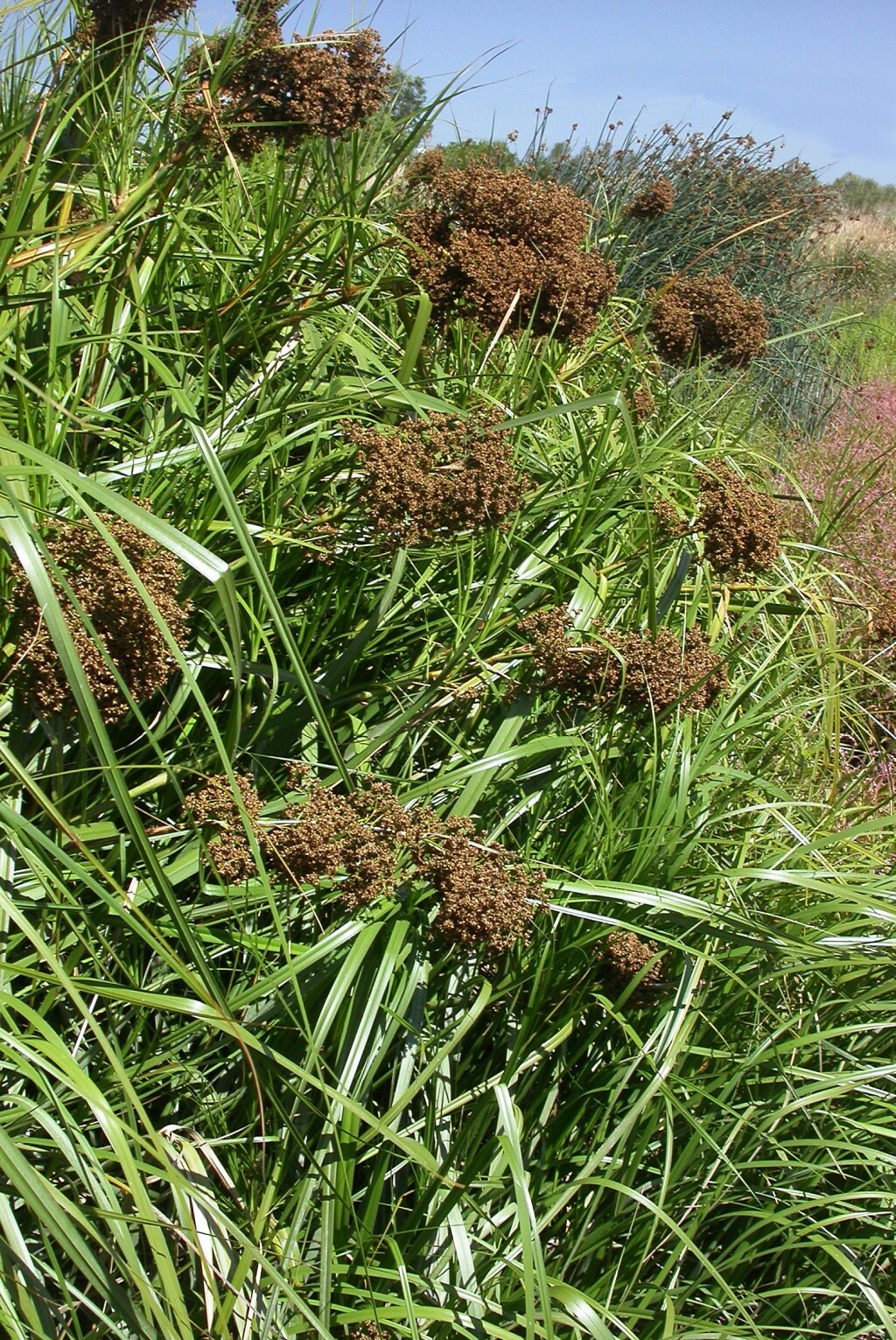Cladium
Perennials, often with creeping rhizomes. Culms erect, hollow, trigonous to terete, noded, leafy throughout their length. Leaves with long tubular sheaths and flat, dorsiventrally compressed blades; ligule absent. Inflorescence panicle-like, consisting of several remote partial inflorescences; branches solitary or in pairs in the axils of leaf-like bracts; involucral bracts long, leaf-like. Spikelets very numerous, in numerous head-like clusters, terete, 2(–3)-flowered, both flowers bisexual or either the lower or the upper one male or functionally male; rachilla persistent, straight, with very short internodes; glumes spirally arranged, the lowest 3 or 4 empty, shorter; usually no terminal empty glume; hypogynous disk present, often inconspicuous; stamens 2(–3); style mostly (2–)3(4–6)-fid, continuous with ovary; style-base thickened, conical, persistent on nut and fused with it, glabrous. Nut trigonous to terete, truncate at base, on small saucer-shaped disk.
4 species from tropical and temperate regions of the world; 1 species in eastern and northern Australia.
Wilson, K.L. (1994). Cyperaceae. In: Walsh, N.G.; Entwisle, T.J., Flora of Victoria Vol. 2, Ferns and Allied Plants, Conifers and Monocotyledons, pp. 238–356. Inkata Press, Melbourne.
 Spinning
Spinning

